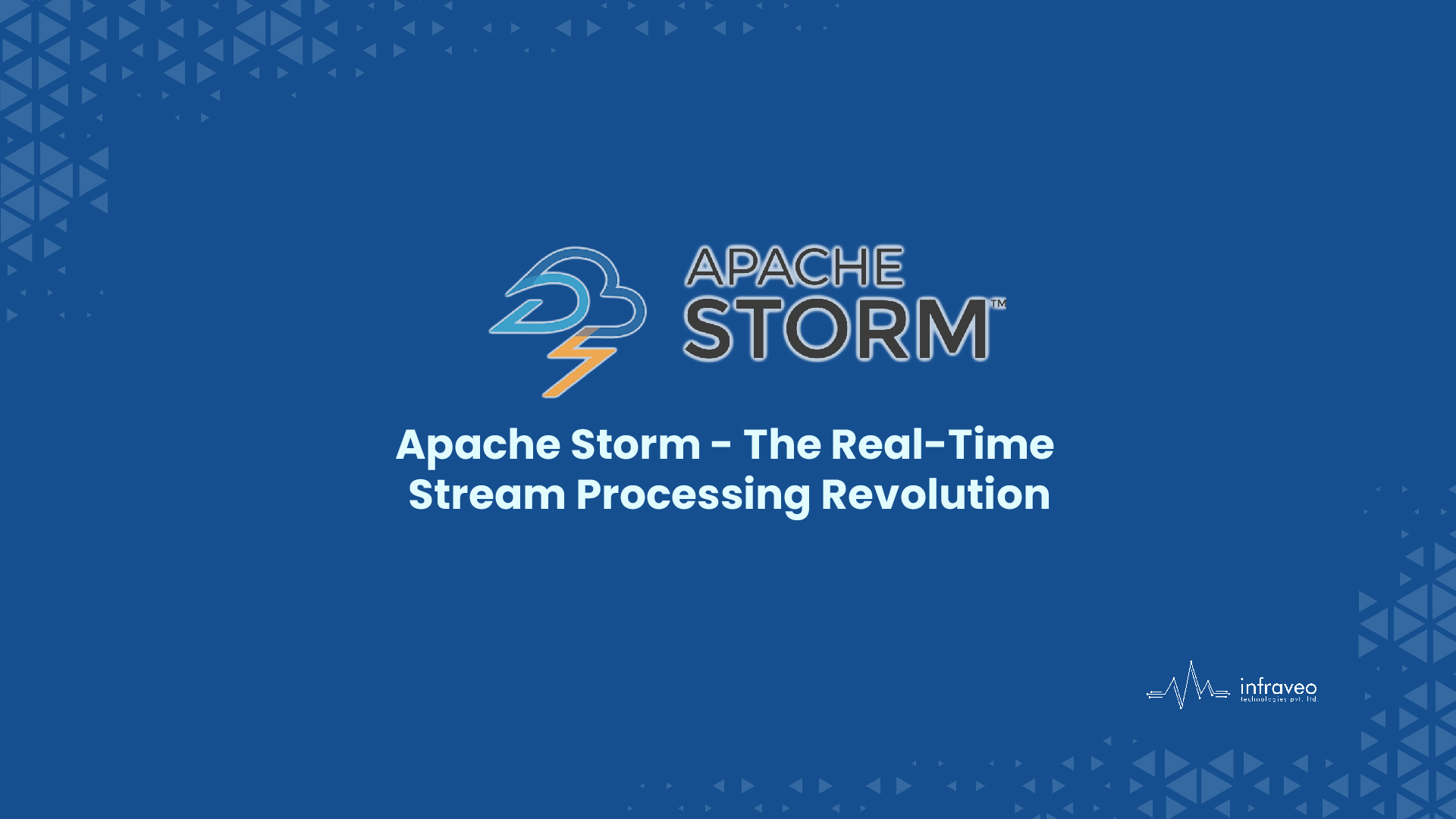Introduction
Apache Storm is a free and open source distributed real-time computation system. Apache Storm makes it easy to reliably process unbounded streams of data, doing for real-time processing what Hadoop did for batch processing. It is simple, can be used with any programming language, and is a lot of fun to use!
What Is Apache Storm?
Apache Storm provides an easy-to-use framework for processing unbounded streams of data reliably through fault-tolerant message passing mechanisms. It provides both eventual consistency (no two messages will ever be received in an inconsistent state) as well as strong consistency (two messages can never be received in an inconsistent state). The framework is also designed with many features specifically tuned towards handling high volume, low latency traffic patterns typical in streaming applications such as financial trading systems or media streaming pipelines like Netflix’s recommendation engine! If this sounds like your kind of problem, then keep reading…
The storm has many use cases: real-time analytics, online machine learning, continuous computation, distributed RPC, ETL, and more. Apache Storm is fast: a benchmark clocked it at over a million tuples processed per second per node. It is scalable, fault-tolerant guarantees your data will be processed, and is easy to set up and operate. Storm integrates with the queueing and database technologies you already use.
Further, the storm is a scalable, fault-tolerant, distributed real-time computation system. It was created by the Twitter data engineering team and is now used by many companies to process millions of messages per second. Storm’s design makes it easy to get started with Apache Storm. But, also gives you control over how your data flows through the system.
Apache Storm Topology
A developer can define streams of data as “spouts” and the operations to be performed on those streams as “bolts”. Then Storm connects these components in a topology (a directed acyclic graph) where the spouts and bolts are nodes on the graph. Finally, one submits the topology to a cluster for execution. This is similar in concept to MapReduce, but without the requirement that a new data processing job be created for each computation performed.
- Define the spouts and bolts.
- Connect the spouts and bolts in a topology.
- Submit the topology to a cluster for execution. This is similar in concept to MapReduce, but without the requirement that a new data processing job be created for each computation performed.
Organizations that use Apache Storm
Storm can process data quickly after being deployed and is also simple to use. Many organizations have used Storm because of its many advantages.
Twitter –
Twitter uses Apache Storm to power a number of its operations. Storm works nicely with the rest of Twitter’s infrastructure, which includes the message system, monitoring and alerting systems, and database systems like Cassandra, Memcached, and Mesos.
Infochimps –
Data Delivery Services, one of Infochimps’ cloud data services, sources data from Storm. It makes use of Storm to offer cloud services for data gathering, transmission, and intricate in-stream processing that are linearly extensible.
Spotify –
Unquestionably, it is the best platform for streaming music. It provides a vast array of real-time material, such as music suggestions, analytics, ad creations, etc., with 50 million users and 10 million subscribers worldwide. Spotify uses Apache Storm to deliver these functionalities more precisely.
Additionally, it has made it simple for the corporation to deliver fault-tolerant, low-latency distribution systems.
RocketFuel –
A startup called RocketFuel uses artificial intelligence to scale increase marketing returns on investment in digital media. On Storm, they intend to develop a platform that would provide real-time tracking of impressions, clicks, bid requests, etc. This platform is designed to function by copying crucial Hadoop-based ETL pipeline workflows.
Flipboard –
Flipboard is a single location where you can browse and save all the news that interests you. At Flipboard, systems like Hadoop, Elasticsearch, HBase, and HDFS (Hadoop Distributed File System) are used with Apache Storm to build incredibly extensible platforms.
Here, Apache Storm is used to provide services like content-search, real-time analytics, bespoke magazine feeds, etc.
Conclusion
Storm integrates with the queueing and database technologies you already use. A developer can define streams of data as “spouts” and the operations to be performed on those streams as “bolts”. Then Storm connects these components together in a topology (a directed acyclic graph) where the spouts and bolts are nodes on the graph. Finally, one submits the topology to a cluster for execution. This is similar in concept to MapReduce, but without the requirement that a new data processing job be created for each computation performed.




